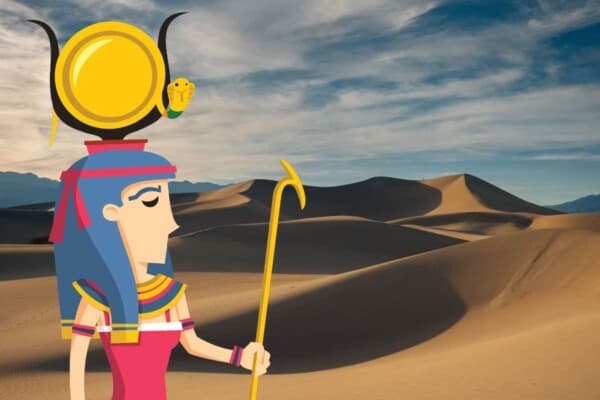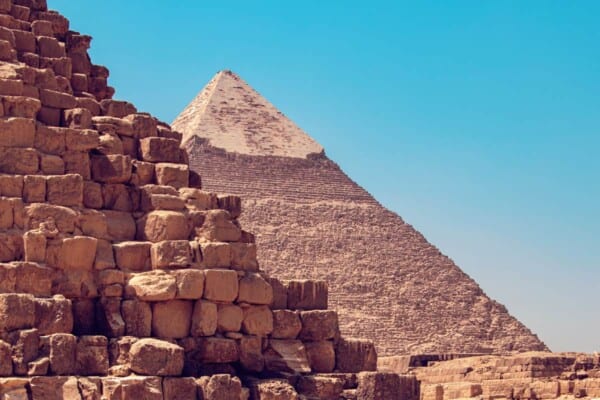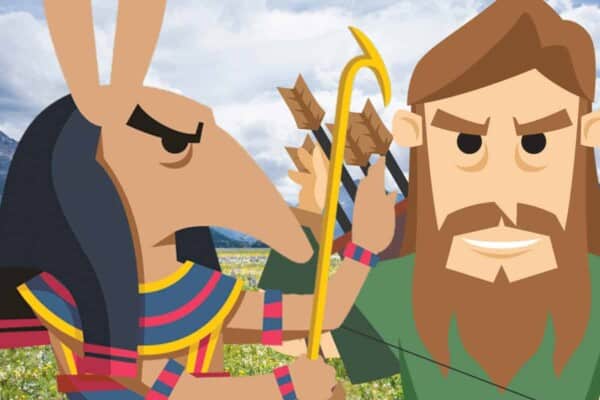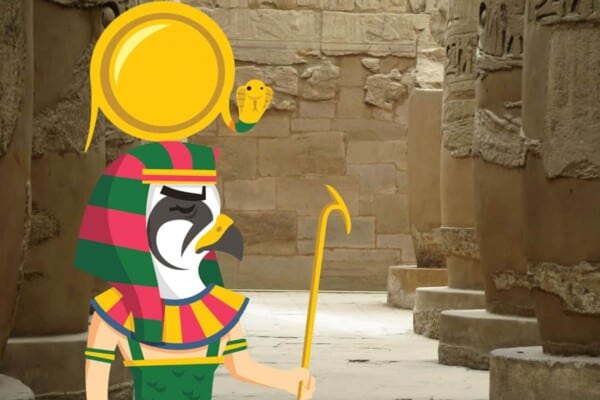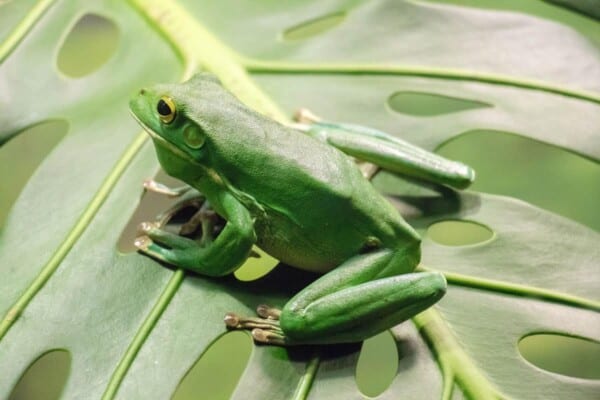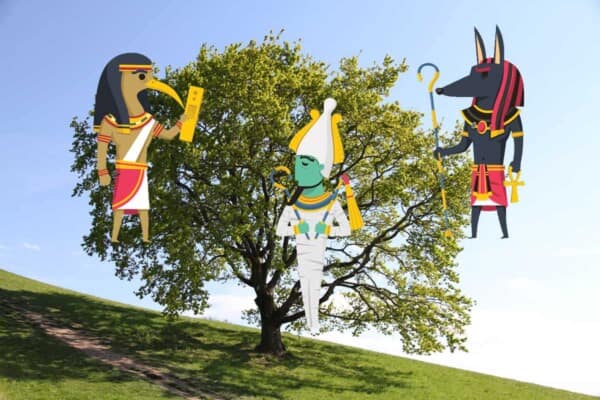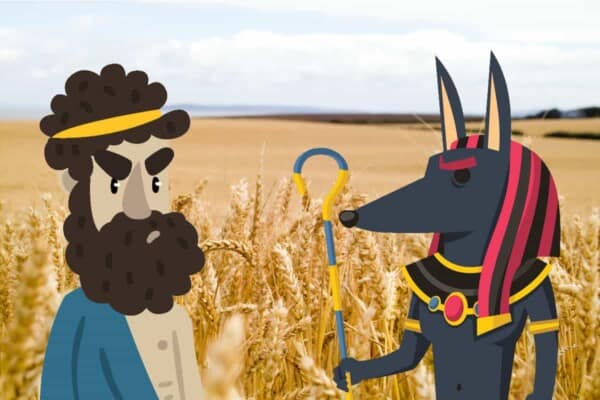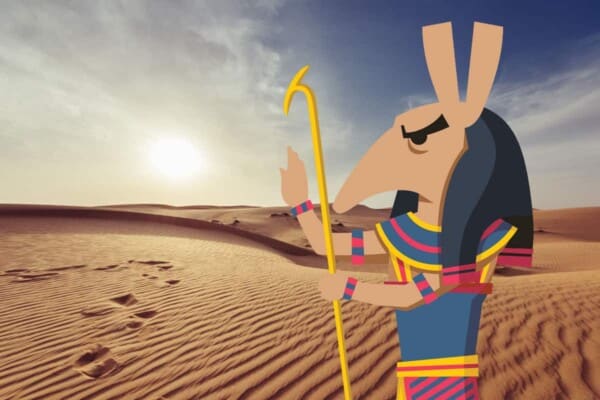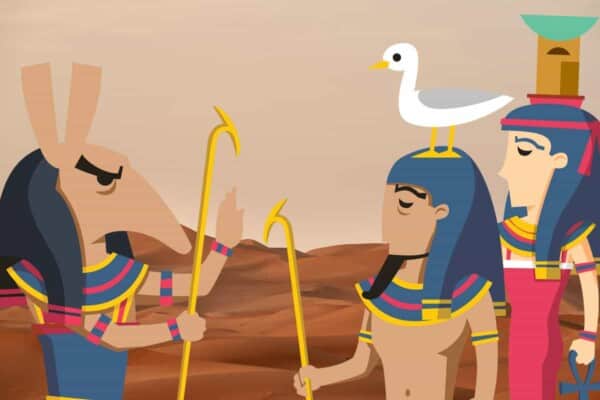Hathor was the Egyptian goddess of the sun. She was the wife or consort of Horus and also Ra, who were her male counterparts.
This goddess was one of the most major in Ancient Egyptian theology and she had many roles, ranging from everything to a sky deity to a vengeful goddess to a benevolent representation of music and dance.
The following facts detail some of the most interesting parts of Hathor’s mythology, discussing her roles, her children, and her stories. As one of the key goddesses, anyone with an interest in Ancient Egypt should start here!
A Few Fascinating Facts about the Egyptian God Hathor
1. Hathor was the symbolic mother of all pharaohs
As Horus and Ra’s consort (and/or sometimes mother or daughter), every pharaoh was her son, as they were considered the sons of these deities.
2. She was Ra’s favorite daughter and consort
Whenever he was separated from her, he fell into a deep depression until he returned. When she danced naked before him, it was the only thing that made him smile and laugh.
3. Her dominions were many
Included amongst them were: motherhood, dance, music, fertility, vengefulness, kingship and queenship, the sun and sky, sexuality, joy, love, and leading souls into the afterlife.
4. Her sacred animal was a cow
This animal was heavily associated with both motherhood and the sky. She sometimes had the head or even the full body of a cow.
5. She was exemplary of ideal Ancient Egyptian femininity
All of her aspects in one were considered ideal for daughters, wives, and mothers.
6. Hathor was known as the mistress of the sky and the mistress of the stars
The sky where she lived was a body of water through which the sun god sailed every day
7. She was often conflated with another goddess in Heliopolis, Nebethetepet
This goddess was the female counterpart of Atum (who was also often conflated with Ra). Her name meant “Lady of the Offering”, “Lady of Contentment”, or “Lady of the Vulva”.
8. She was mother, wife, and daughter to Ra to represent the cycle of the sun
Every morning she birthed him, at noon she wed him, and in the evening, he brought her to life.
9. Hathor was one of the Eyes of Ra
These were female deities who were counterparts and daughters of Ra, and they enacted his vengeance when needed.
10. She was associated with the sistrum, an ancient instrument associated with eroticism and sexuality
She embodied pure passion and pure fury at once. She was also the goddess of music and dance.
11. She was a goddess of fate, especially the fate of gods in the form of the Seven Hathors
Hathor was heavily associated with shai, one of the aspects of the soul. She was often present at the birth of gods and predicted their eventual deaths.
12. Hathor represented many foreign lands
Occasionally in her fury she would abandon Ra and explore other lands. She would only return when Thoth or another god was sent to bring her back.
13. She often crossed the boundary between the surface world and the underworld
Along with several other goddesses, she would lead souls to a place of eternal sustenance.
14. Hathor was also worshipped outside of Egypt and combined with their gods
Some other places that celebrated Hathor were Byblos, Sinai, and Nubia.
15. In the New Kingdom, her role was overshadowed by Isis
As the wife of Osiris, Isis became the symbolic mother of pharaohs instead.
16. Women suffering fertility problems or seeking safe childbirth often wore her elephant as a protective icon
They also prayed to little fetishes in the form of Hathor that they kept in their homes.
17. She had two centers of her cult worship
The first was Dendera, known in Ancient Egyptian as Iunet or Tantere. The other was Memphis or Menefer. In Ancient Egyptian, Memphis had many names including as Inebu-hedj (“white walls”), Djed-Sut (“everlasting place”), Ankh-Tawy (“life of two lands”), and Men-nefer (“enduring and beautiful”).
18. Although she was the mother of many gods, four were her most common
These were Horus, Ra, Ihy, and Neferhotep. Ihy, son of Horus, was the god of the ecstasy of sistrum music.
19. Her hieroglyphic name contained a falcon in a square box
It translated to “house of Horus”, based on Horus’s falcon symbol.
20. As well as Ra and Horus, she was consort to Atum, Amun, and Khonsu
All three of these eventually came to be associated with aspects of Ra himself.
21. The gem with which she was most heavily associated with was turquoise
One of her epithets was even “Lady of Turquoise”. She was also heavily related to gold and copper.
22. She was considered the most beautiful of women
Those who worked with cosmetics regarded her as their patron
23. During Greco-Roman occupation, she was conflated with two of their goddesses
These were Aphrodite (or Venus), the goddess of love and sex, and Hera (or Juno), queen of the gods.
24. She had a number of sisters and one brother
They were Sekhmet, Bastet, Maat, and Tefnut, and her brother was Shu.
25. More children were named after Hathor in Ancient Egypt than any other Egyptian deity
This was because of her status as mother and protector, and it was considered good luck
26. She also had more festivals dedicated in her honor than any other god
One of these was the festival of drunkenness!
27. As well as her humanoid and bovine form, she had several other representations.
These included her appearing as a cat, a lion, a goose, and a sycamore fig tree.
28. Her priests represented her more joyful aspects
Most were musicians, dancers, actors, or other artists.
29. She was presented two mirrors as her traditional votive offering
This was both a representation of her beauty and her many different aspects and reflections.
30. She was heavily associated with the Milky Way galaxy
To the Ancient Egyptians, the galaxy was variably known as the milk spilled by a cow and as the Nile of the sky
31. In some stories, she held up the sky as the cosmos cow
Her legs were the four pillars that separated sky from earth
32. She was often combined with her sister, Sekhmet
Sekhmet was Ra’s most violent and bloodthirsty daughter. She once went on a rampage to destroy all of humanity in revenge for their disrespect of her father and lover. She was only stopped when she drank red wine, thinking it was blood, and passed out from her drunkenness. When she awoke, she was the much gentler Hathor.
33. The goddess Bat (or Bata), who was the personification of the Milky Way, was entirely subsumed by Hathor
Bat was associated with the sistrum and with the power of breath and life. Hathor took over all of these roles and Bata was almost entirely forgotten in later Egypt.
34. She was part of a sacred triad with her husband and son
Hathor, Ihy, and Horus were often celebrated and worshipped together in the same temple as a representation of an ideal Egyptian family.
35. An ancient zodiac star map was recently discovered in her main temple
This was the temple of Dendera, and many researchers are still trying to decipher the rules of the star chart.
36. She was not a goddess whose worship was limited by societal standing
While several gods and goddesses were worshipped only by royalty, the rich, or the poor, Hathor transcended this and was celebrated by almost everyone.
37. Hathor was celebrated well back into the Old Kingdom
She was often shown beside her sister, Bast, another protective goddess associated heavily with cats.
38. She was often portrayed in statues and paintings as nursing the current pharaoh
A link to Hathor as mother and son was considered proof of the pharaohs’ divinity and right to kingship on earth.
39. Though she was sure of her own beauty, goodness, and intelligence, Hathor was never vain
She enjoyed experiencing the beauty in all things, including other gods and people.
40. Myrrh as an incense was a scent and smoke that represented Hathor
This particular incense was related to newborns, femininity, and female sexuality
41. She restored the sight of Horus after it was taken in a battle with Set
She used the milk of the sycamore tree, which was considered to have restorative properties, to return Horus’s eye to its perfect condition.
42. In Thermopolis, she was considered the wife of Thoth, their most prominent god.
There she was the mother of Ra-Horakhty (the combination of Ra and Horus), and joined with the goddess Seshat, who was the usual wife of Thoth.
Final Thoughts
Hathor was a powerful mother goddess and she garnered plenty of respect from the Ancient Egyptian people, male and female alike. She was a wife, consort, mother, and sister to the gods, and she featured so prominently in so many myths that the pantheon needed her to thrive.
Related Posts
Contents
- A Few Fascinating Facts about the Egyptian God Hathor
- 1. Hathor was the symbolic mother of all pharaohs
- 2. She was Ra’s favorite daughter and consort
- 3. Her dominions were many
- 4. Her sacred animal was a cow
- 5. She was exemplary of ideal Ancient Egyptian femininity
- 6. Hathor was known as the mistress of the sky and the mistress of the stars
- 7. She was often conflated with another goddess in Heliopolis, Nebethetepet
- 8. She was mother, wife, and daughter to Ra to represent the cycle of the sun
- 9. Hathor was one of the Eyes of Ra
- 10. She was associated with the sistrum, an ancient instrument associated with eroticism and sexuality
- 11. She was a goddess of fate, especially the fate of gods in the form of the Seven Hathors
- 12. Hathor represented many foreign lands
- 13. She often crossed the boundary between the surface world and the underworld
- 14. Hathor was also worshipped outside of Egypt and combined with their gods
- 15. In the New Kingdom, her role was overshadowed by Isis
- 16. Women suffering fertility problems or seeking safe childbirth often wore her elephant as a protective icon
- 17. She had two centers of her cult worship
- 18. Although she was the mother of many gods, four were her most common
- 19. Her hieroglyphic name contained a falcon in a square box
- 20. As well as Ra and Horus, she was consort to Atum, Amun, and Khonsu
- 21. The gem with which she was most heavily associated with was turquoise
- 22. She was considered the most beautiful of women
- 23. During Greco-Roman occupation, she was conflated with two of their goddesses
- 24. She had a number of sisters and one brother
- 25. More children were named after Hathor in Ancient Egypt than any other Egyptian deity
- 26. She also had more festivals dedicated in her honor than any other god
- 27. As well as her humanoid and bovine form, she had several other representations.
- 28. Her priests represented her more joyful aspects
- 29. She was presented two mirrors as her traditional votive offering
- 30. She was heavily associated with the Milky Way galaxy
- 31. In some stories, she held up the sky as the cosmos cow
- 32. She was often combined with her sister, Sekhmet
- 33. The goddess Bat (or Bata), who was the personification of the Milky Way, was entirely subsumed by Hathor
- 34. She was part of a sacred triad with her husband and son
- 35. An ancient zodiac star map was recently discovered in her main temple
- 36. She was not a goddess whose worship was limited by societal standing
- 37. Hathor was celebrated well back into the Old Kingdom
- 38. She was often portrayed in statues and paintings as nursing the current pharaoh
- 39. Though she was sure of her own beauty, goodness, and intelligence, Hathor was never vain
- 40. Myrrh as an incense was a scent and smoke that represented Hathor
- 41. She restored the sight of Horus after it was taken in a battle with Set
- 42. In Thermopolis, she was considered the wife of Thoth, their most prominent god.
- Final Thoughts
- Related Posts


